7-town consortium receives $66,000 grant for zoning modernization
The objective is to support housing development in downtowns, village centers, and concentrated neighborhoods.
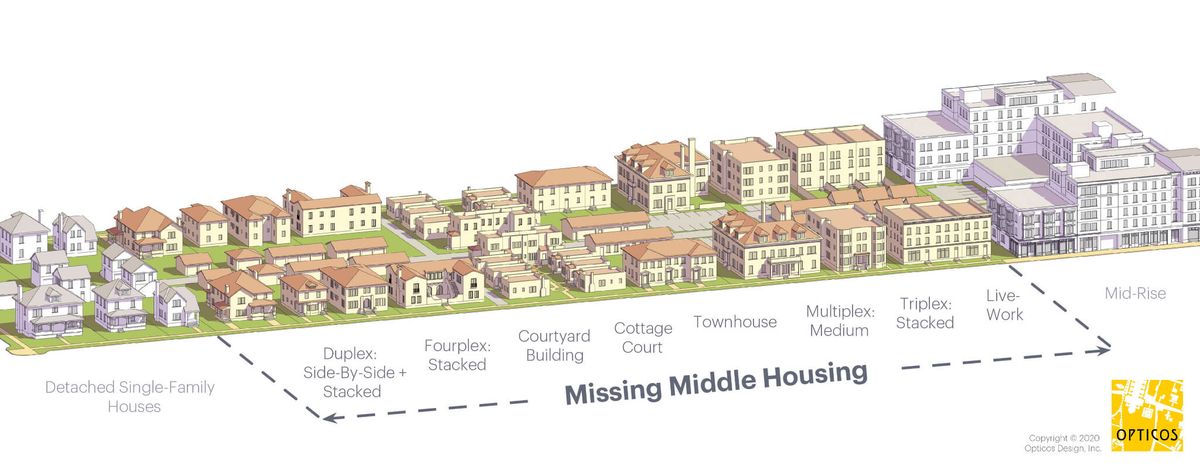
Bethel, Hartford, Randolph, Rochester, Strafford, Thetford, and Woodstock, acting as a consortium and partnering with Two-Rivers Ottauquechee Regional Planning Commission (TRORC), have been awarded a $66,000 grant from the Department of Housing and Community Development (DHCD). The grant is for modernizing zoning bylaws in the seven towns with an eye towards supporting local housing development.
“The project will address the region’s housing shortage and implement the ongoing Keys to the Valley initiative. This project will bring communities together for a common cause to make positive change in the way municipal officials and residents think of affordable housing.”
The FY22 Bylaw Modernization Grant Projects “support local zoning bylaw updates that expand opportunities for needed homes in great neighborhoods, confront the State’s housing crisis, and ready communities for unprecedented investments in housing and infrastructure.”
Vermont appropriated $500,000 in Fiscal Year 2022 for grants to support municipal land use, development, and zoning bylaw updates that increase housing choice and affordability, and implement Vermont’s smart growth principles. Forty-one municipalities across Vermont received an award.
“Although zoning isn’t the only market force constraining the supply of available homes, leaders across Vermont increasingly recognize the importance of erasing unnecessary local barriers that prevent well-located homes that are close to jobs, served by ready infrastructure, and accessible to daily destinations and transit; other constraints like financing or contractor availability are irrelevant if someone can’t obtain a permit.” – Commissioner Josh Hanford, DHCD
The seven-town project will start with a virtual joint kick-off meeting facilitated in part by Kevin Geiger, Senior Planner at TRORC. There will also be a consortium of two public informational hearings. More information on those meetings to come later.
Kevin will be working with each community to perform a comprehensive review of each town’s existing bylaws, to draft potential map changes to zoning districts, and to develop final, customized bylaw amendments for each town. This process will include meetings with local Planning Commissions and Selectboards, as well as local public hearings for any proposed bylaw amendments.
The grant will also support relevant updates to the Keys of the Valley website.
Proposed bylaw amendments will leverage DHCD’s Zoning Guide. The guide provides incremental steps and sample language that local planning officials can consider and recommends a four-step process: understand local needs, determine areas where zoning changes should be targeted (such as village centers), gauge local support and capacity, and then calibrate zoning language for local conditions.
The Guide focuses on housing types that complement Vermont’s existing historic and scenic character. Those include accessory dwelling units, duplexes, triplexes, four-plexes, townhouses, and cottage courts. The descriptions and illustrations below are taken directly from the Guide.
Accessory Dwelling Units
Vermont examples of accessory dwellings include secondary units within the principal residence as well as residences within detached ancillary buildings. A common type is the carriage house flat, as illustrated here, where the subordinate dwelling is located over the garage.
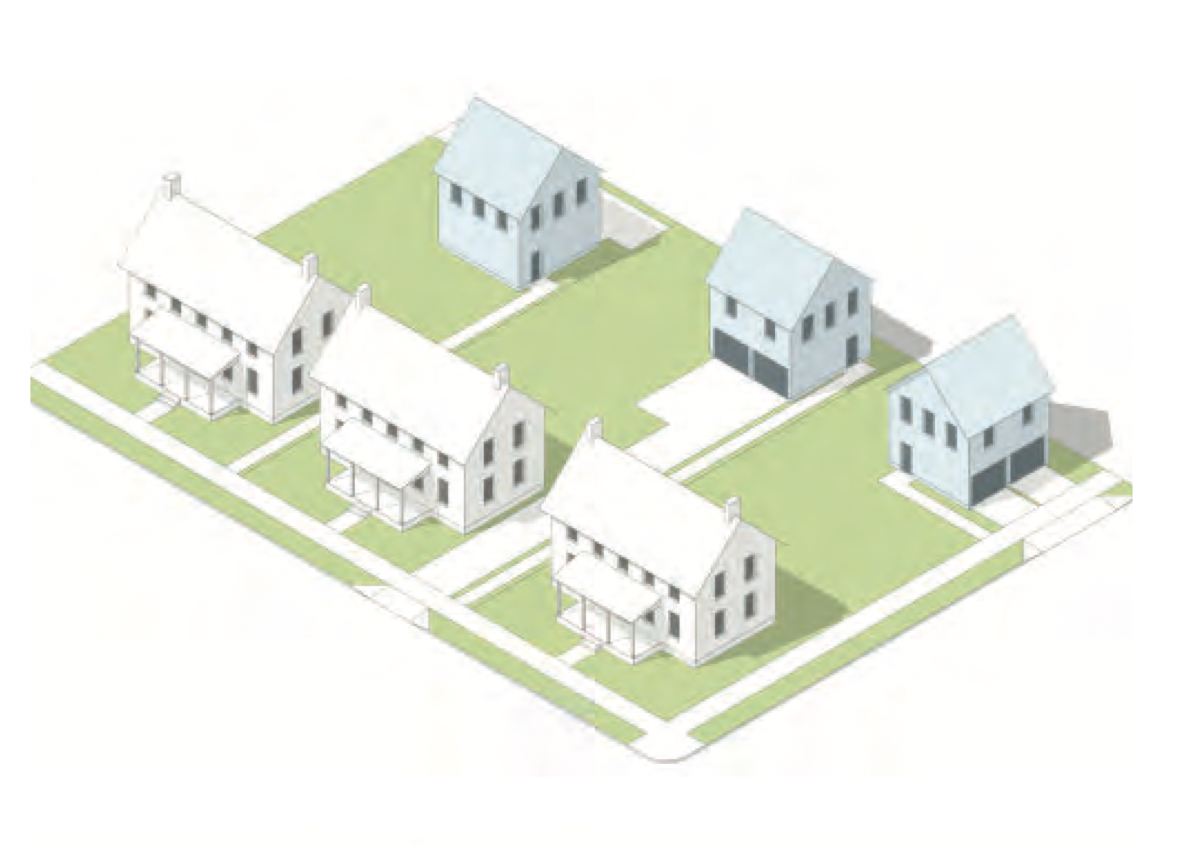
Duplexes
Many examples exist of large homes built as a two-household dwelling. There are also a wealth of examples of single-family dwellings being converted to duplexes over time. Because this dwelling type easily fits the scale of most neighborhoods, permitting conversions (as well as allowing for construction of new duplexes) is a logical choice for adding housing to a community seeking increased affordability.
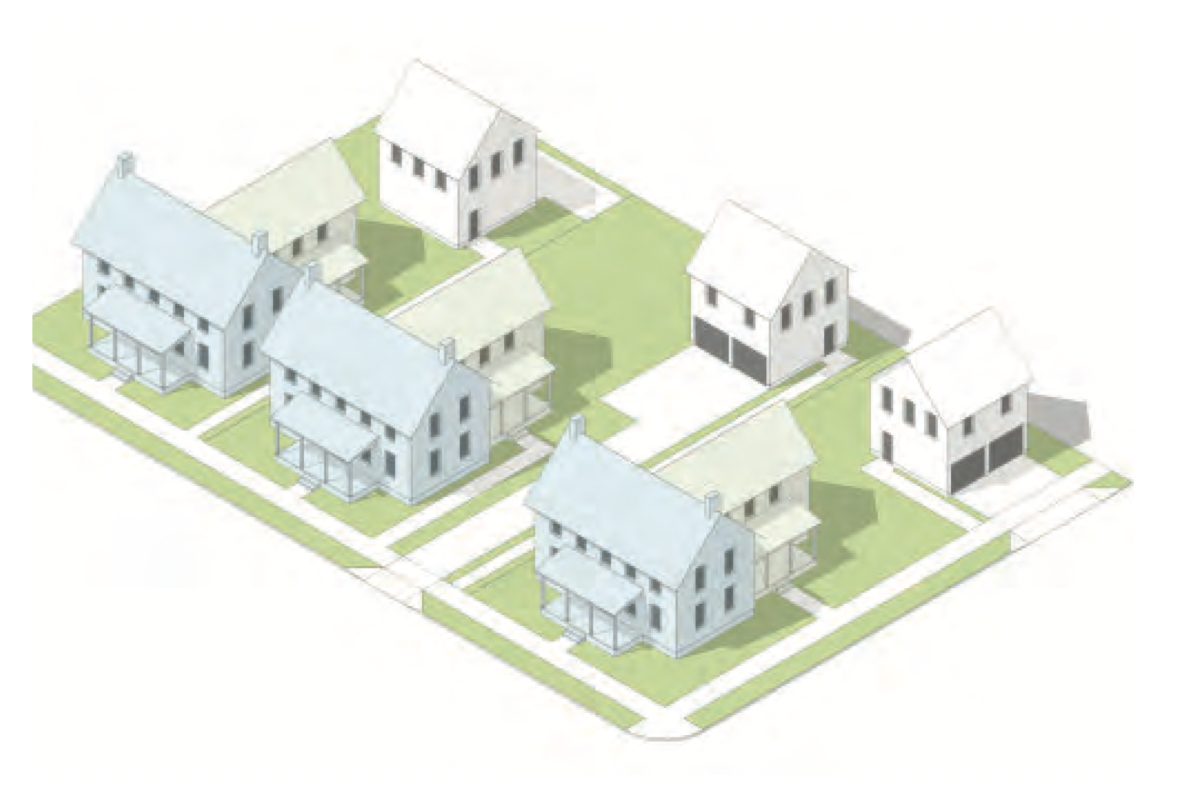
Triplexes
Newly-constructed structures that are more grand in scale, or converted existing larger residences, may easily accommodate three households within a single building. Vermont has a rich collection of historic mansions that have been subdivided to provide multiple homes while maintaining the historic character of the neighborhood, and the type can add much-needed additional housing to a community with an abundance of homes larger than what the market is demanding.
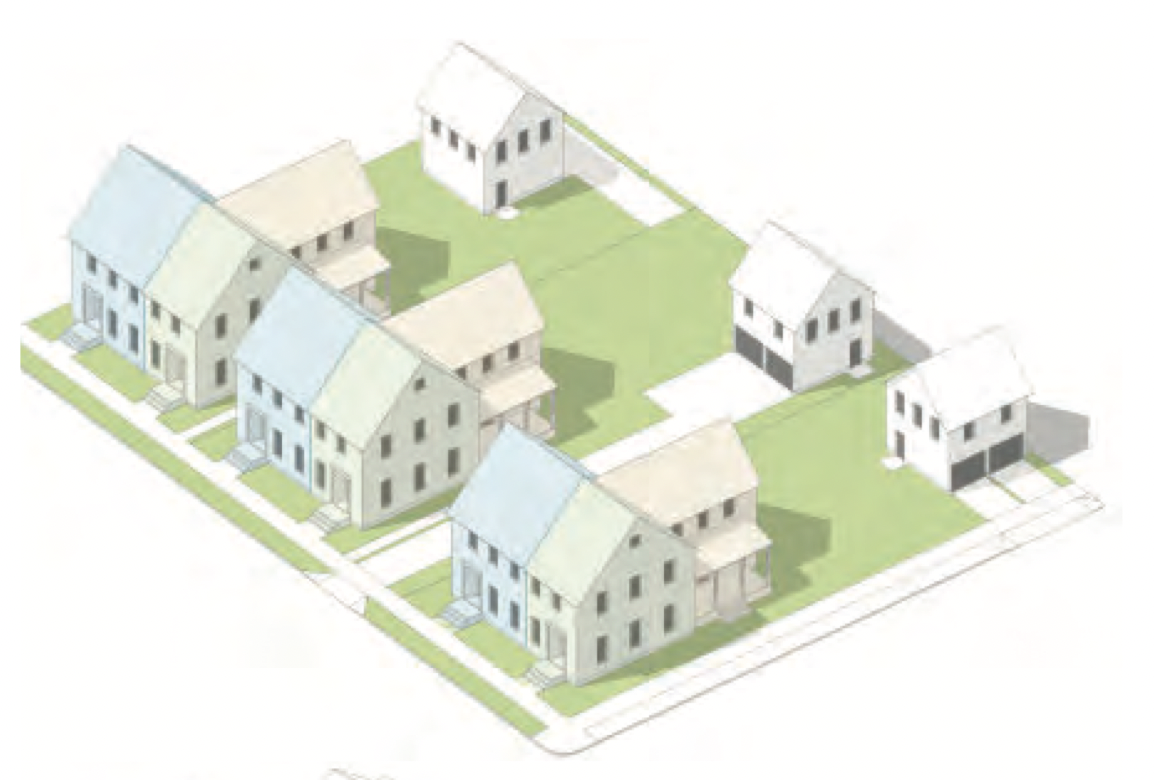
Four-plexes
Buildings in the scale of larger residences may even be able to accommodate up to four individual households. Keeping the building height and massing consistent with the historic mansions common in Vermont maintains a character appropriate to the surrounding neighborhood while providing multiple smaller individual units.
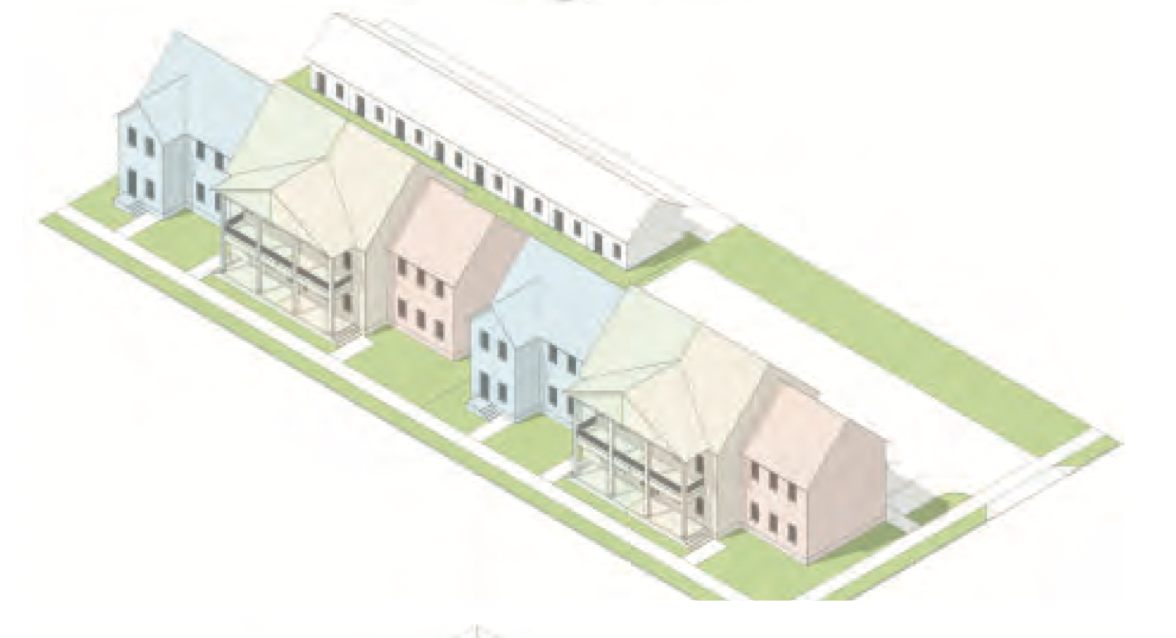
Townhouses
Small- to medium-sized dwellings, townhouses typically consist of two to eight (usually) attached single-family homes placed side by side. While not a common historic type in Vermont, the popularity of townhouses in new development underscores a market demand for this type of attached housing. With appropriate detailing in character with the materials of homes in surrounding neighborhoods, the type can provide multiple smaller units on smaller parcels of land.
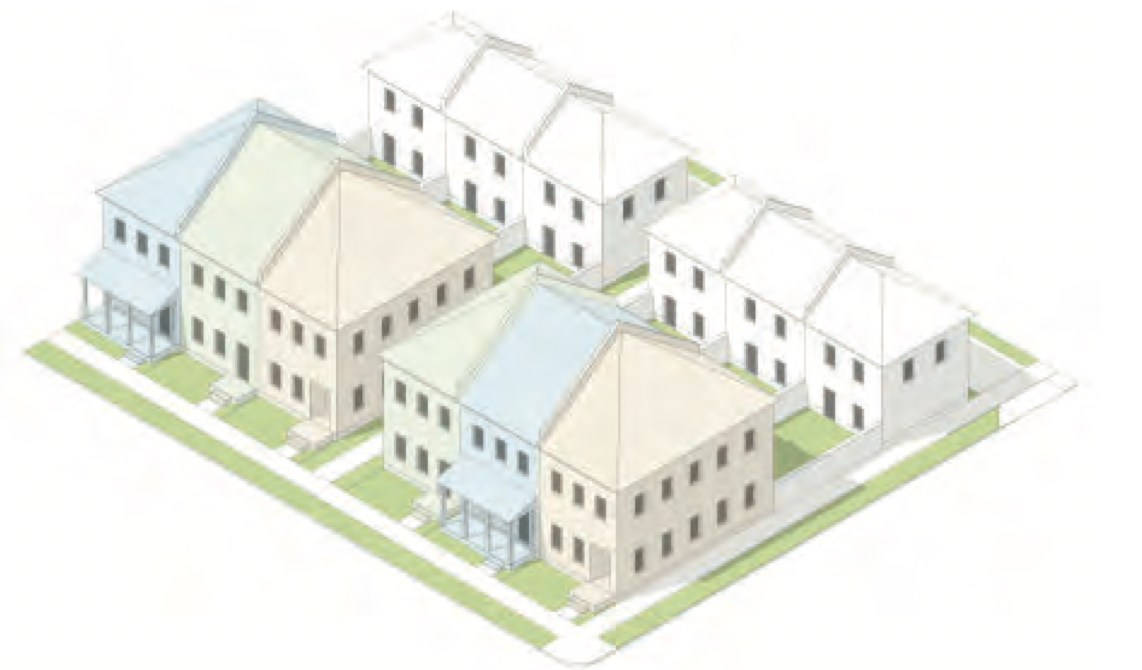
Cottage Courts
A series of small, detached structures, cottage courts provide multiple units arranged to define a shared court that is typically perpendicular to the street. Vermont towns often include small historic cottages scattered across neighborhoods, and introduction of this type would reflect the scale of those dwellings in a compact and concentrated way.
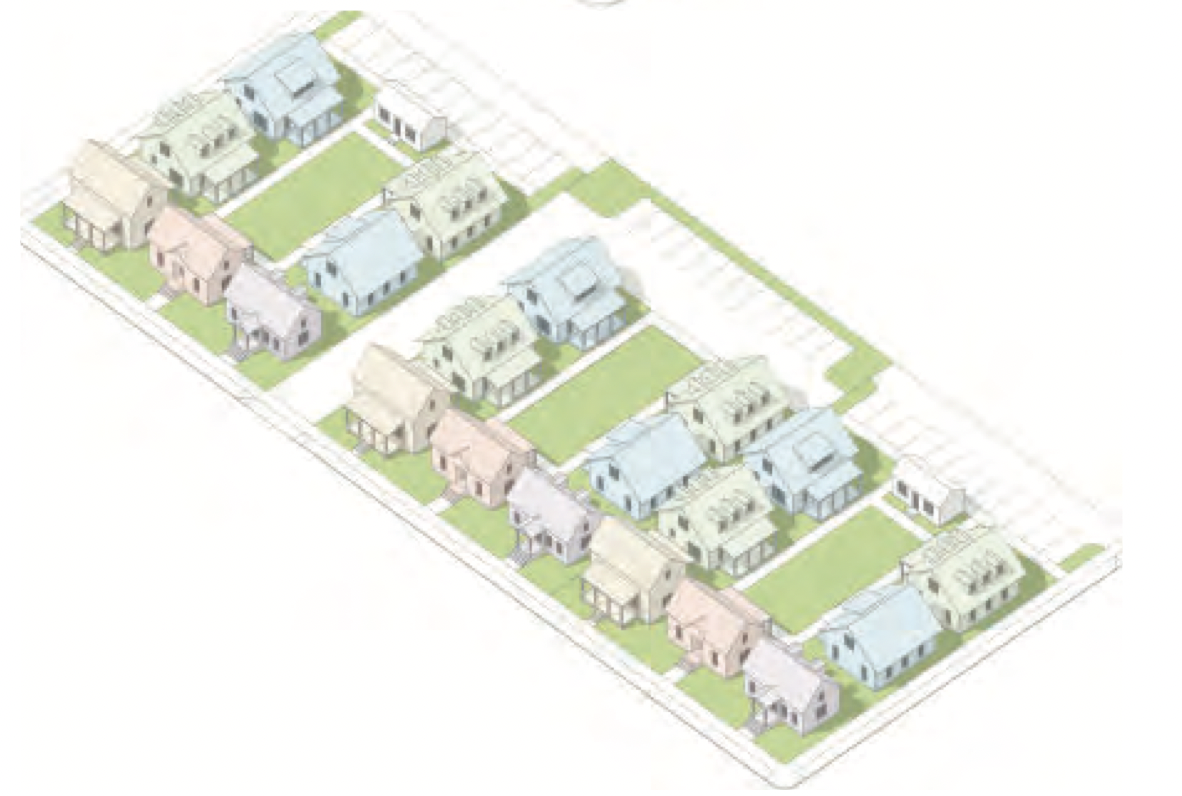
The Guide recommends that bylaw changes be applied to targeted areas such as downtowns, village centers, and concentrated neighborhoods. The needed regulatory reforms could cover a wide range of topics, including dimensional requirements, parking standards, allowable uses, street standards, regulations for accessory dwellings units, and, more broadly, the development review process in general.
A specific example includes matching minimum lot sizes to local patterns: “Most Vermont municipalities have applied rural or suburban lot standards onto older neighborhoods that have different characteristics, or where walkability is a goal. This can significantly limit the rights of lot owners to improve or enlarge buildings or to make changes such as adding more housing. Bylaws should be amended to either eliminate minimum lot sizes or to ensure that existing lot sizes in a zoning district become the basis for the minimum lot sizes for that district. This would not require land to be rezoned except where a single zoning district with rural or suburban standards has been applied to land with very different existing characteristics.”
Another example addresses obstacles to developing accessory dwelling units: “Local regulations could be improved to encourage creation of more ADUs through minor changes to parking standards and to size and ownership restrictions.” Owner-occupancy requirements for ADUs is a topic recently discussed in Thetford.
Reviewing each town’s zoning bylaws, working through each recommendation, and calibrating it to local needs and desires will be an undertaking. However, seven Upper Valley towns working with the Regional Planning Commission doing exactly that will be a critical component of addressing the region’s shortage of housing.
